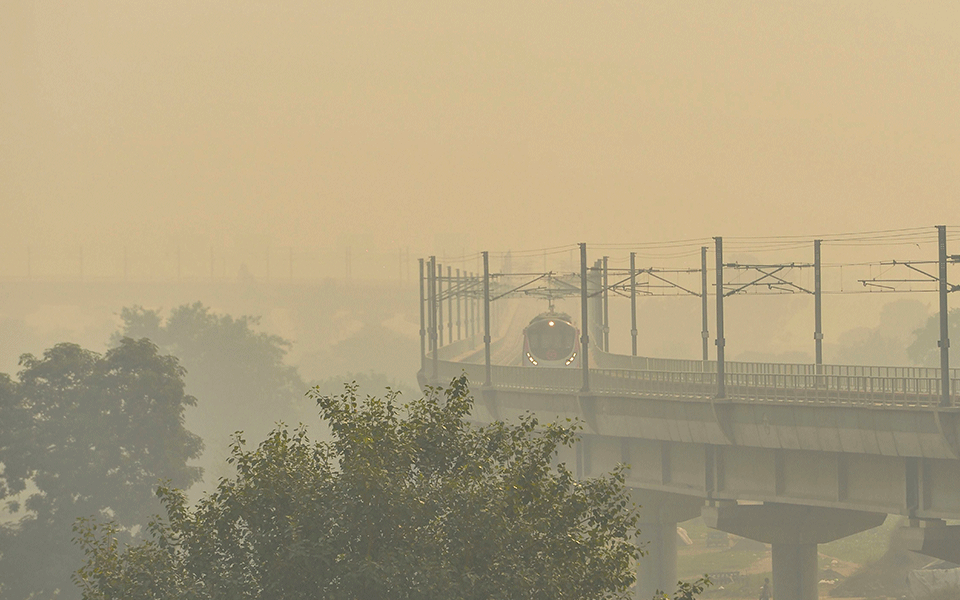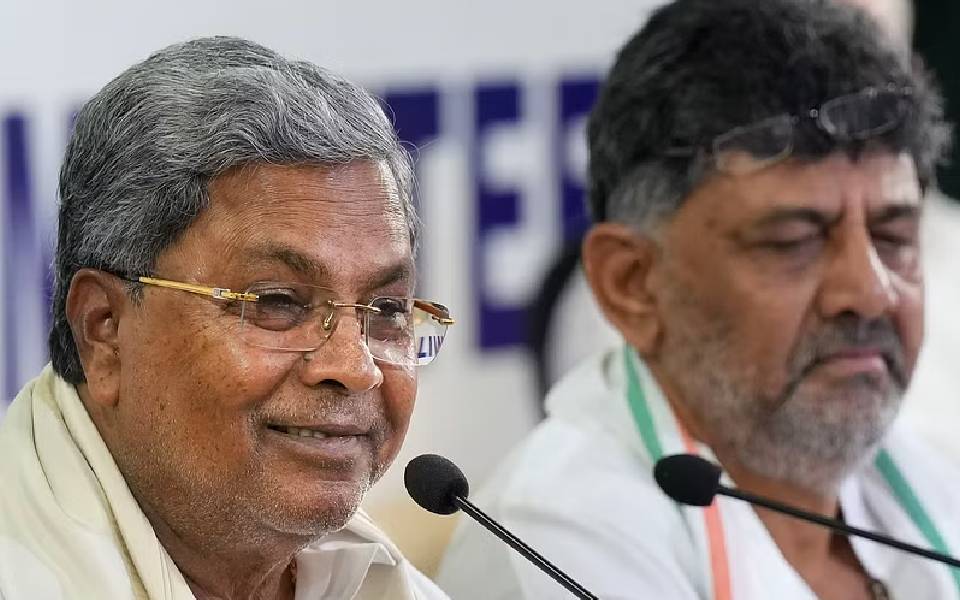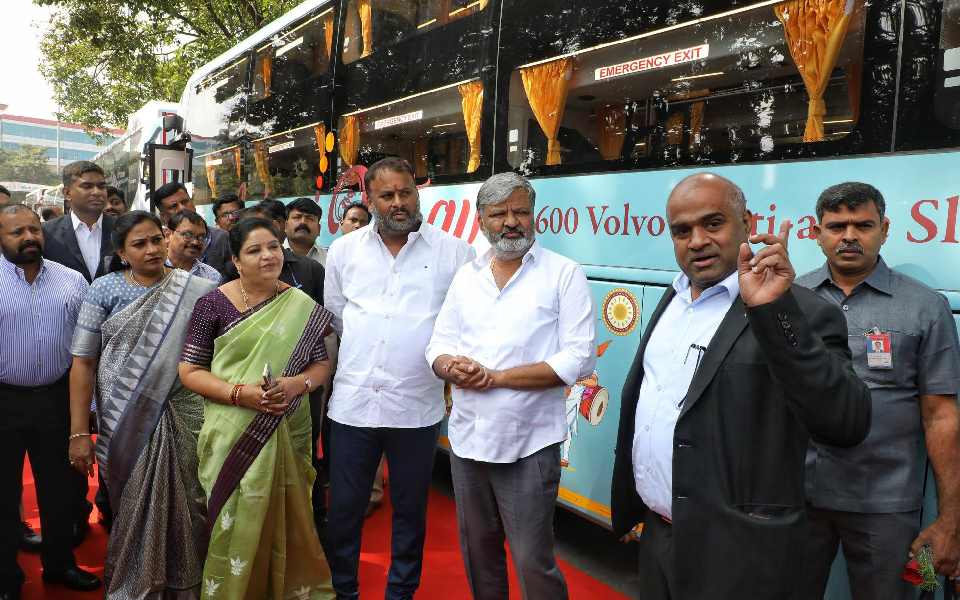New Delhi: A layer of haze enveloped the national capital a day after Diwali as the city's air quality on Monday plummeted to the "severe" category for the first time this season with a large number of revellers brazenly flouting the Supreme Court-enforced two-hour limit for bursting crackers.
Delhi's apprehensions came true despite the top court's order that only green firecrackers, which cause 30 per cent less pollution, can be manufactured and sold, and the Arvind Kejriwal government organising a mega laser show in an effort to dissuade people from bursting crackers.
According to the Ministry of Earth Sciences' air quality monitor, SAFAR, levels of PM2.5 tiny particulate matter of diameter 2.5 or less than 2.5 microns that can enter deep into the lungs reached as high as 735 at Delhi University.
Delhi's overall air quality index (AQI) stood at 463 at 11.30 am, according to the System of Air Quality and Weather Forecasting and Research (SAFAR).
The AQI at Pusa, Lodhi Road, Airport Terminal T3, Noida, Mathura Road, Ayanagar, IIT Delhi, Dhirpur, and Chandni Chowk was 480, 436, 460, 668, 413, 477, 483, 553 and 466, respectively.
However, according to Central Pollution Control Board (CPCB) data, Delhi's overall AQI stood at 348 at 11.30 am on Monday. It was 337 at 4 pm on Sunday.
SAFAR said an increase in the wind speed will help disperse pollutants and the pollution levels are expected to come down by evening.
It had earlier predicted that Delhi's overall AQI would enter the severe category between 1 am and 6 am on Monday, primarily due to firecracker emissions, unfavourable weather and a significant spike in stubble burning.
An AQI between 0-50 is considered "good", 51-100 "satisfactory", 101-200 "moderate", 201-300 "poor", 301-400 "very poor", and 401-500 "severe". Above 500 is "severe-plus emergency" category.
The satellite towns of Ghaziabad (378), Greater Noida (364), Gurgaon (359) and Noida (375) recorded their AQI in the very poor category, according to CPCB data.
Ambala, Hisar and Kurulshetra in Haryana recorded their AQI at 370, 380, and 377, respectively. In Uttar Pradesh' Muzaffarnagar, Moradbabad, Meerut, it was 414, 393 and 330.
The AQI in Punjab's Patiala, Ludhiana, Jalandhar and Khanna stood at 334, 314, 321 and 301, respectively.
Last night, people reported violation of the Supreme Court-enforced two-hour window in Malviya Nagar, Lajpat Nagar, Kailash Hills, Burari, Jangpura, Shahdara, Laxmi Nagar, Mayur Vihar, Sarita Vihar, Hari Nagar, New Friends Colony, Hauz Khas, Gautam Nagar, Dwarka among others places.
Residents in Noida, Greater Noida, Gurgaon, Ghaziabad and Faridabad also reported extensive fireworks much beyond the timeframe. People could also be seen bursting crackers before 8 PM, however, the intensity remained low.
After last year's Diwali, Delhi's AQI had crossed the 600-mark, which is 12 times the safe limit. The AQI post-Diwali was 367 in 2017 and 425 in 2016.
With Delhi's air quality plummeting to dangerous levels around Diwali every year, the Supreme Court in 2018 banned polluting firecrackers and ordered that only green firecrackers, which is said to cause 30 per cent less pollution, can be manufactured and sold.
But the green pyrotechnics have failed to draw good response both from sellers and buyers, primarily due to lack of variety, limited stock and high prices.
The Delhi government had organised a four-day laser show from October 26 to encourage people not to burst crackers this Diwali and Chief Minister Kejriwal had said the move aims at encouraging a "community and pollution-free Diwali".
Last year also, people continued to buy the conventional firecrackers and use them.
Let the Truth be known. If you read VB and like VB, please be a VB Supporter and Help us deliver the Truth to one and all.
Morena, Jan 3: A Dalit woman and her daughter were brutally assaulted on Friday allegedly by two men and then dragged on the road in Morena in Madhya Pradesh following a minor incident involving a dog, a police official said.
A video of the incident, which took place in full public view in Ambah area, went viral on social media.
"Anita Mahor has sustained serious injuries after being hit by sticks and then dragged on the road. Her daughter Bharti is also injured. We have arrested Rajesh Tomar and Kumher Singh Tomar for assaulting them," Ambah police station in charge Satendra Singh Kushwaha said.
"Anita Mahor's son Deepak has told us that his younger brother Santosh was going to throw waste this morning when he was startled by the presence of a dog. He threw the waste, which also included dung, on the dog in fright and fled. This infuriated the two accused," he said.
The two accused and others stormed into Mahor's house armed with a chopper and sticks and attacked her and her kin, police said.





